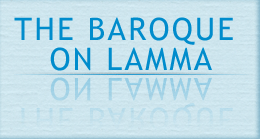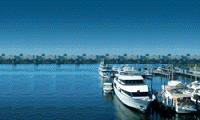
Stakeholder Analysis on the Baroque on Lamma

Stakeholder Analysis on the Baroque on Lamma
A group of students of The Hong Kong University of Science and Technology had chosen this project as their final year thesis. They undertook Stakeholder Analysis by interviewing 14 stakeholders from 5 categories and found that the fundamental issue is “trust”. Therefore, they considered “…for the best of public interest and solve the gap of trust, setting up a trust fund was…a suitable solution.” The report therefore included a proposal on Community Conservation Trust Fund.
The conclusion section of the report is as follow.
Conclusion
SUSTAINABLE DEVELOPMENT
SHOULD FULFILL THE FOUR CRITERIA – ECONOMIC, SOCIAL, ENVIRONMENT AND
CULTURE.
Our final year project investigates the way to achieve a win-win solution in the regarded development plan – The Baroque on Lamma. With a definition of win-win solution to be attaining sustainable development, it is concluded that the project should fulfill the three criteria – economic, social and environmental aspects. It is also very crucial to include the cultural aspect to retail the local context.
Stakeholder analysis was the method we used to begin with our research. It is a method which can record qualitative arguments. We had two approaches for the stakeholder analysis – survey and interview.
The survey was conducted in the northern part of Lamma to seek for a general understanding and stance in the development plan. We understood that there is a great discrepancy in attitude between the local residents and tourists towards the plan.
The interview was conducted throughout the semester term. We had in total 14 interviews across the 5 categories of stakeholders. It was a valuable chance to have face-to-face interview with different stakeholders. These opportunities allowed us to truly understand their needs and concerns. Although interviewing with stakeholders is regarded to be a time consuming and cumbersome process, the first hand information contributes to a more accurate and reliable finding than the second-hand information available from other channels.
Also, the interactive dialogue during the interviews gave us an opportunity not only to listen to stakeholders’ concerns, but also to counter argue with them. We found that the process of counter arguing with them with regard to others’ concern is the most effective way for different parties to understand each other’s standpoint. This also allows both the stakeholders and our team to sum up and look at a whole picture of the arguments.
With regard to the different beliefs and concerns from different stakeholders, our team analyzed the findings into 4 points of conflict – active conservation, public interest, rights to decide and trust for Agile. These four arguments were the concerns simultaneously emphasized by different stakeholders of the plan during our interviews. It was clear that the natural environment was the most crucial opposing reason for the development. However, in consideration of the public interest that the plan can generate, the living standard of the locals and the formation of a new tourist spot seem to serve a great benefit to Hong Kong. Yet, the decision for the approval of the development plan resides in the hands of the government.
The government currently has no special weighting for different stakeholder groups in consideration of their concerns, but there could be a possibility to map out the difference in influences on different stakeholders in order to have a special weighting on different stakeholders’ concerns. The last issue, trust, is a complicated issue. The issue of trust is the greatest hindrance for different parties to be willing to sit down and talk, not to mention whether different parties would agree on each other.
The fundamental arguments found in our stakeholder analysis all contribute to the trust issue.
In order to secure for the best of public interest and solve the gap of trust, setting up a trust fund was identified to be a suitable solution.
Community Conservation Trust Fund (CCTF) is our final proposal. The documents served as a tool for different stakeholders to comment on a possible solution for the plan. The Fund would be an independent NGO set up in the Southern Lamma. The document explains the details in setting up and management of the Fund.
The set up of the Fund would start from a preparatory committee with representatives from Agile, conservation NGOs and local community NGOs after the approval of S12A under Town Planning Ordinance. The committee would come up with the list of responsibilities of the Fund, financial issues and assign the first batch of BoD for the Fund. They would also be involved in some pilot projects in order to demonstrate a good track record and the feasibility of certain mentioned responsibilities of the Fund. The agreed terms and timeline would be handed in together with the development plan to the Town Planning Board in consideration for the S16 approval.
Upon the start up of the Fund after S16, the BoD would be appointed by the preparatory committee. The Board consists of an equal percentage of representatives from each of the category group – conservation, community, academic and businesses. They would be responsible for setting the annual goal and achievement for the Fund. With regard to the execution, an operation team would be hired. The team would serve as the frontline representatives of the Fund in charge of daily operations.
With the CCTF document, a range of disagreements can be incorporated and addressed.
Many of the conservation and public interest goals can be achieved and further making the Southern Lamma an acclaimed eco-destination of Asia.
Recommendation
Our group is assigned to study on the Southern Lamma development plan proposed by Agile Property Holdings Limited. The findings and details are all specific to the plan. However, our team would expect that the methodology and the rationale behind our work can be served as a principle for other developers in Hong Kong in consideration to solve the different beliefs and concerns of stakeholders.
Our methodology would encourage developers to be transparent in their development plan and actively engage with different stakeholders. The approach most suitable for the engagement would be first conducting meetings with different stakeholders to understand their concerns by conducting a stakeholder analysis. The following step would be finding an integrative solution to address the concerns made by different stakeholders. In seeking a consensus with the major groups of stakeholders, it is more assuring that the project is to be approved by the government.
Our team hopes that the idea of sustainable development could be made popular throughout in Hong Kong and possibly in Asia. The idea allows focuses on the plan to be made on economic, social and environment. With the development plan basing on the three sectors, it is definitely easier for the developer to convince other stakeholders to vote for the plan.
While the government is more willing to approve projects with a consensus with different stakeholders and a greater overall benefit to Hong Kong. Therefore, our team believes that the idea of sustainable development is beneficial in overall terms to developers as well as the whole Hong Kong community.
If you are interested to view the full report, please provide your name and e-mail address, and a download hyperlink will be sent to your e-mail address immediately.
|






